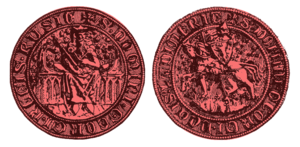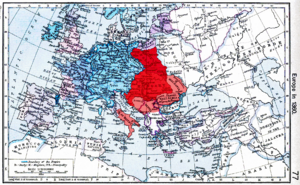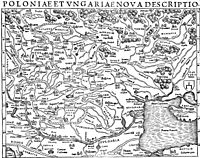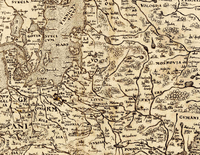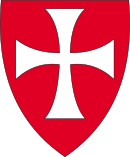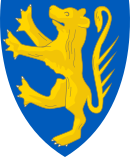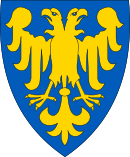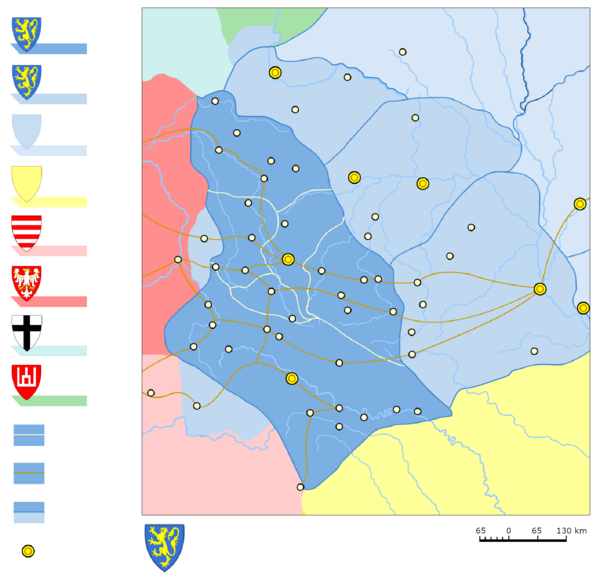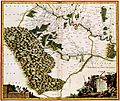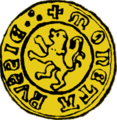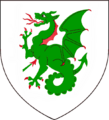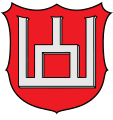Kingdom of Galicia–Volhynia facts for kids
Quick facts for kids
Principality of Galicia–Volhynia
(1199–1253) Kingdom of Galicia–Volhynia (1253–1349/1392) Old East Slavic: Королєвство Русь
|
|||||||||||||
|---|---|---|---|---|---|---|---|---|---|---|---|---|---|
| 1199–1349/1392 | |||||||||||||

Map of the Kingdom of Galicia–Volhynia in the 13th/14th century.
|
|||||||||||||
| Status | Principality Vassal state of the Golden Horde (from 1246) |
||||||||||||
| Capital |
|
||||||||||||
| Common languages | Old East Slavic | ||||||||||||
| Religion | Eastern Orthodoxy | ||||||||||||
| Government | Monarchy | ||||||||||||
| Prince, later King | |||||||||||||
|
• 1199–1205
|
Roman the Great | ||||||||||||
|
• 1211–1264
|
Daniel of Galicia | ||||||||||||
|
• 1293–1301
|
Lev I of Galicia | ||||||||||||
| Historical era | Middle Ages | ||||||||||||
|
• Principality
|
1199 | ||||||||||||
|
• Kingdom
|
1253 | ||||||||||||
|
• Loss of Halych to Poland
|
1349 | ||||||||||||
|
• Volhynia falls to Lithuania
|
1392 | ||||||||||||
|
|||||||||||||
The Principality or, later, Kingdom of Galicia–Volhynia was an important state in Eastern Europe during the Middle Ages. It existed from 1199 to 1349. Its lands were mostly in what is now Ukraine. Parts also stretched into Belarus, Poland, Moldova, and Lithuania.
This kingdom was one of the three main powers that grew after the old Kievan Rus' state broke apart. The main language spoken was Old East Slavic. This language is the ancestor of modern East Slavic languages like Ukrainian. The official religion was Eastern Orthodoxy.
Roman the Great brought together the regions of Halych and Volhynia around the year 1200. Later, after the terrible Mongol invasion of Kievan Rus' (1239-1241), Prince Daniel of Galicia and other princes had to promise loyalty to Batu Khan of the Golden Horde in 1246. The kingdom was eventually taken over by Catholic Poland in 1349.
Geographically, Galicia–Volhynia was a large area. It stretched between rivers in what is now Poland. Its eastern parts reached into modern-day Belarus and Ukraine. Over time, it shared borders with many other powerful states. These included the Grand Duchy of Lithuania, the Kingdom of Hungary, and the Kingdom of Poland.
Contents
History of Galicia–Volhynia
Early Times and Slavic Tribes
After the fall of the Roman Empire, East Slavic people lived in this area. Groups like the Buzhans and White Croats were among them. In 907, White Croats were part of a military campaign led by Prince Oleg of Novgorod. This shows their early connection to the Rus' lands.
In 981, Vladimir the Great of Kievan Rus' took control of the area. He founded the city of Volodymyr. He also helped bring Christianity to the local people.
In the 12th century, the Principality of Halych was formed here. Its rulers were descendants of Vladimir the Great. This principality later joined with the nearby Principality of Volhynia. This union created Galicia–Volhynia.
Roman the Great: Uniting the Lands (1199–1205)
Volhynia and Galicia were first two separate areas. They were ruled by different branches of the Rurik dynasty. Prince Roman the Great of Volodymyr ruled Volhynia.
In 1198 or 1199, the last Prince of Galicia died without an heir. Roman then took over Galicia. He united his lands into one strong state. The local nobles, called boyars, had invited him. They hoped he would be easy to control. But Roman proved them wrong. He limited their power and helped the common people.
During Roman's rule, the main cities were Halych and Volodymyr. Roman made alliances with Poland and Hungary. He also had good relations with the Byzantine Empire. He even captured Kyiv in 1200. This made him the most powerful Rus' prince for a short time.
A Time of Struggle (1205–1245)

In 1205, Roman the Great was killed in a battle with Polish forces. This started a long period of fighting and confusion. It lasted for almost 40 years. The Galician boyars tried to stop Roman's son, Danylo, from taking the throne. They wanted to put weaker rulers in power whom they could control.
Because of these internal struggles, Galicia–Volhynia became a battleground. Poland and Hungary often interfered in the region. For a time, the Principality of Galicia was controlled by the sons of another prince, Ihor Svyatoslavych. Later, a boyar named Volodyslav Kormylchych even took the throne. This was very unusual, as he was not from the Rurikid royal family.
In 1214, Hungary and Poland made an agreement. They divided the Galician lands between them. But in 1221, Mstyslav the Able freed Galicia–Volhynia from Hungarian and Polish control.
It was Danylo Romanovych, Roman's son, who finally brought Volhynia and Galicia together again. Danylo first made his base in Volhynia. After several attempts, he conquered Halych in 1238. He reunited the lands and ruled for 25 years. In 1238, he defeated the Teutonic Knights in the Battle of Dorohychyn.
Danylo captured Kyiv in 1239. But soon after, the Mongols attacked and destroyed Kyiv in 1240. In 1245, Danylo and his brother Vasylko won a major battle against Polish and Hungarian forces. This gave them full control of Galicia–Volhynia.
King Danylo's Golden Age (1245–1264)
Danylo had to deal with the powerful Mongol Golden Horde. In 1246, he traveled to their capital, Saray. He accepted their rule, at least officially. Danylo even changed his army to be more like the Mongols'. He used their weapons and tactics.
Some historians believe Danylo's alliance with the Mongols was a smart move. It helped Galicia–Volhynia stay strong and prosperous. Danylo also made new alliances with Hungary, Poland, and Lithuania. He hoped to create a group of countries to fight the Mongols.
In 1253, Pope Innocent IV allowed Danylo to be crowned king. Danylo was crowned by a church official in Dorohochyn. He became the first King of all Rus' (Rex Russiae). This brought Galicia–Volhynia closer to Western Europe.
In 1256, Danylo managed to push the Mongols out of Volhynia. He also stopped them from taking the cities of Lutsk and Volodymyr. However, in 1260, a large Mongol army forced Danylo to accept their power again. He had to tear down the forts he had built.
Under Danylo's rule, the Kingdom of Ruthenia became very powerful. It was a "golden age" for Galicia–Volhynia. Literature, like the Galician–Volhynian Chronicle, grew. Many people moved to the kingdom, helping it grow. Trade also boomed, connecting the Black Sea to Poland, Germany, and the Baltic Sea. Important cities like Lviv, Volodymyr, Halych, and Kholm became centers for trade and culture.
Lev I: A New Direction (1264–1301)
After Danylo died in 1264, his son Lev became ruler. Lev moved the capital to Lviv in 1272. He kept the kingdom strong for a while. Unlike his father, Lev worked closely with the Mongols. He even allied with the Tatar Khan Nogai.
Lev and his Mongol allies invaded Poland. They took many captives and much treasure. But Lev did not gain much land from Poland. Lev also tried to take control of Lithuania, but he failed. From 1274 to 1276, he fought a war with Lithuania and lost some territory.
In 1279, Lev allied with the King of Bohemia and invaded Poland again. His attempt to capture Kraków failed. However, he did defeat Hungary in 1280. He took over part of Transcarpathia, including the city of Mukachevo. In 1292, he defeated parts of Poland and added Lublin to his kingdom.
The Kingdom's Decline (1301–1340)
After Lev's death in 1301, the kingdom began to decline. His son Yuri I ruled for only seven years. His time was mostly peaceful, and the economy did well. But Yuri I lost Lublin to the Poles in 1302.
From 1308 to 1323, Yuri I's sons, Andrew and Lev II, ruled together. They called themselves kings of Rus'. They made alliances with Poland and the Teutonic Order. These alliances were against the Lithuanians and the Mongols. However, the kingdom still had to pay tribute to the Mongols. The brothers died in battle against the Mongols in 1323. They had no children to take over.
With no direct heirs from the Rurikid family, Volhynia came under the control of the Lithuanian prince Liubartas. The boyars in Galicia invited a Polish prince, Boleslaw Yuri II, to rule. He was a grandson of Yuri I. Boleslaw became Orthodox and took the name Yuri II. But the boyars suspected him of favoring Catholicism. They poisoned him in 1340.
The boyars then chose one of their own, Dmitry Detko, to lead Galicia. Detko, with Tatar and Lithuanian help, defeated the Poles in 1341. But he was later forced to accept Polish rule. After Detko died, Poland's King Casimir III invaded. He captured and took over Galicia in 1349. This was the end of Galicia–Volhynia as an independent state. It also ended its ties to the Golden Horde.
The Final Years and What Came Next (1340–1392)
From 1340 to 1392, there was a civil war in the region. It turned into a fight for power between Lithuania, Poland, and Hungary. In 1344, a treaty was signed. It gave the Principality of Peremyshl to Poland. The rest of the territory went to Liubartas, a Lithuanian prince.
By the mid-14th century, Poland and Lithuania divided the region. King Casimir III of Poland took Galicia and Western Volhynia. Eastern Volhynia and Kyiv came under Lithuanian control.
After 1352, most of the Ruthenian Voivodeship belonged to Poland. It stayed part of Poland even after the Union of Lublin in 1569. In 1772, Empress Maria Theresa of Austria claimed the old Hungarian rights to the region. She used this to justify Austria's part in dividing Poland.
Why Galicia–Volhynia Was Important
The Galician–Volhynian Chronicle shows that the Romanovich family, who ruled Galicia–Volhynia, wanted to be seen as the true heirs of Kievan Rus'. They believed King Danylo was the last ruler of Kyiv before the Mongol invasion. So, they felt they were the rightful successors to the Kyiv throne. Until the state ended, its rulers claimed all the land of Rus'.
Galicia–Volhynia was different from the northern and eastern parts of the old Kievan Rus'. It had closer ties with its western neighbors. King Danylo was sometimes an ally and sometimes a rival of Poland and Hungary. The Roman Catholic Church was seen as a neighbor. There were many marriages between the royal families of Galicia and Catholic countries. This was different from the northern Rus' lands, where Westerners were often seen as hostile crusaders.
In Ukrainian history, the Kingdom of Galicia–Volhynia played a big role. It helped unite the western and southern East Slavs. It also became a new center for political and economic life after Kyiv declined.
Regions of Galicia–Volhynia
The principality was divided into several smaller regions and duchies:
- Principality of Halych
- Principality of Peremyshl
- Principality of Zvenyhorod
- Principality of Terebovlia
- Principality of Volhynia
- Principality of Lutsk
- Principality of Dorohobuzh
- Principality of Peresopnytsia
- Principality of Belz
- Land of Chełm (Lublin 1289–1302)
- Land of Berestia
- Black Ruthenia, which was connected to the Grand Duchy of Lithuania after a treaty.
Rulers of Galicia–Volhynia
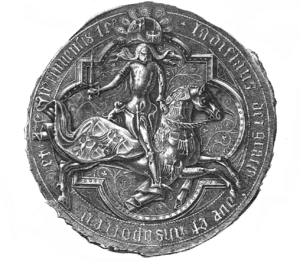
- 1199–1205 Roman the Great (ruled Volhynia since 1197, Galicia since 1199)
- 1205–1214 A time of political crisis
- 1205–1206 Euphrosine Angelina (mother of Danylo) acted as a regent for Danylo
- 1206–1212: The three sons of Ihor Svyatoslavych: Volodymyr Ihorevych, Svyatoslav Ihorevych, and Roman Ihorevych.
- 1210 Rostislav II of Kiev (a short time)
- 1211–1212 Mstislav the Mute as a regent for Danylo
- 1212–1214 An uprising led by a boyar named Volodyslav Kormylchych
- 1214–1232 Hungarian control, sons of Andrew II of Hungary
- 1214–1220 Coloman, son of Andrew (King of Galicia and Lodomeria)
- 1220–1221 An uprising led by Mstyslav the Able, who ruled in Halych from 1221 to 1228
- 1220–1232 Andrew, son of Andrew
- 1232–1235 Danylo
- 1235–1238 Children of Michael of Chernigov
- 1238–1264 Danylo
- 1264–1269 Dual rule by descendants of Daniel
- 1264–1269 Shvarn
- 1264–1301 Lev I of Galicia
- 1301–1308 Yuri I of Galicia
- 1308–1323 Dual rule by descendants of Yuri
- 1308–1323 Lev II of Galicia
- 1308–1323 Andrew of Galicia
- 1323–1349 A time of political crisis, mostly ruled by a boyar named Dmytro Dedko
- 1323–1325 Galicia: Volodymyr I Lvovych of Galicia, Volhynia: Liubartas
- 1325–1340 Yuri II Boleslav (united as a compromise)
- 1340 Galicia taken over by Casimir III the Great
- 1341–1349 Liubartas
- 1349 Galicia became part of Poland and Hungary, Volhynia became part of Lithuania.
Gallery
-
Coins of Dux Wladislaus.
See also
 In Spanish: Principado de Galicia-Volinia para niños
In Spanish: Principado de Galicia-Volinia para niños
- List of Ukrainian rulers
- List of early East Slavic states
- List of rulers of Galicia and Volhynia
- Ruthenian nobility
- Metropolis of Halych




